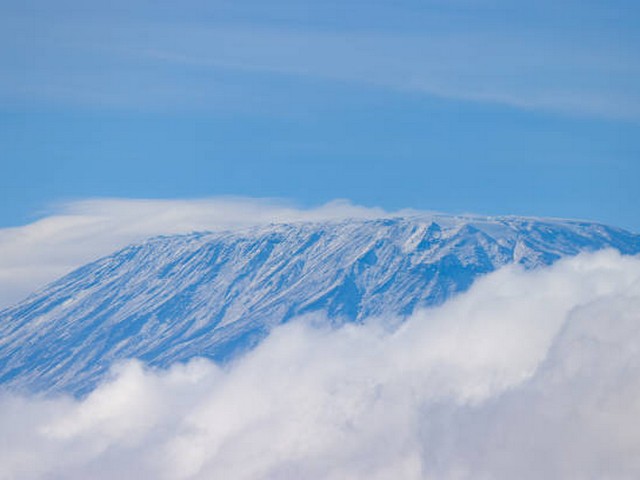Wildlife Preservation Efforts on Kilimanjaro: A Journey to Sustain the Roof of Africa
Nestled in the heart of Tanzania, the majestic Mount Kilimanjaro stands not only as a beacon for avid trekkers but also as a vibrant hub of biodiversity. At the Kilimanjaro Centre for Trekking and Ecotourism (KCTE), we understand that climbing this iconic peak offers more than just a physical challenge—it’s an opportunity to participate in vital conservation efforts and witness the harmony of nature. In this blog, we delve deep into the ongoing wildlife preservation endeavors on Kilimanjaro, highlighting why every step on its slopes contributes to sustaining this unique ecological haven.
The Call of Kilimanjaro: Why Wildlife Preservation Matters Here
Mount Kilimanjaro is more than Africa’s tallest peak; it is a microcosm of diverse ecosystems, ranging from lush rainforests to alpine deserts. This mountain is home to a myriad of species, some of which, like the Kilimanjaro shrew and the Chagga home frog, are found nowhere else on the planet. Preserving Kilimanjaro’s wildlife is crucial, not only for ecological balance but also for maintaining the health of local communities and the global environment.
The Frontline of Conservation: Initiatives Making a Difference
Habitat Restoration and Protection
One of the cornerstone efforts in wildlife preservation on Kilimanjaro involves habitat restoration. Deforestation and land degradation pose significant threats to the habitats essential for wildlife survival. Initiatives such as reforestation projects and controlled grazing practices help maintain the delicate balance of these ecosystems. By booking your climb with KCTE, you contribute directly to these projects, as a portion of every fee goes toward conservation programs.
Anti-Poaching Measures
Poaching remains a dire threat to Kilimanjaro’s wildlife, particularly for species like elephants and leopards. Robust anti-poaching campaigns are in place, involving local communities and international partners. These include the deployment of ranger patrols and the use of technology such as drones for surveillance. KCTE supports these efforts by providing resources and raising awareness among climbers and the global community.
Community Involvement and Education
Conservation is most effective when local communities are engaged and benefit directly from these efforts. Educational programs aimed at schools and villages around Kilimanjaro teach the importance of wildlife preservation and sustainable practices. Community-based initiatives, supported by tourism revenue, empower locals to protect their natural heritage while improving their quality of life.
The Role of Ecotourism: How Climbing Contributes to Conservation
When you embark on a journey to ascend Kilimanjaro with KCTE, you become an integral part of the mountain’s conservation story. Ecotourism, when managed responsibly, serves as a tool for environmental preservation and community development. Your presence helps:
- Generate funds for conservation projects through park fees and contributions to local conservation funds.
- Boost local economies by employing local guides, porters, and staff, thereby reducing the economic reliance on activities harmful to the environment.
- Spread awareness about the importance of biodiversity and conservation efforts through educational talks, guided tours, and firsthand experiences with the mountain’s natural wonders.
Witnessing the Wild: Kilimanjaro’s Unique Wildlife
As you trek through the various climate zones of Kilimanjaro, be prepared to encounter a fascinating array of flora and fauna. From the dense, monkey-filled rainforests at lower altitudes to the rare alpine plants clinging to life near the summit, every step introduces you to the unique species that make Kilimanjaro their home. Key wildlife sightings can include:
- Colobus Monkeys: Easily recognizable by their black bodies and long white tails, these primates are a delight to spot among the branches.
- Kilimanjaro Shrew: This tiny, elusive mammal is adapted to life in the high-altitude zones of the mountain.
- Various bird species: From the striking Malachite Sunbird to the majestic Lammergeier vulture, birdwatchers will be in their element.
Join Us in Preserving Kilimanjaro
Each climb with Kilimanjaro Centre for Trekking and Ecotourism (KCTE) is a step towards preserving this magnificent mountain. By choosing KCTE, you opt for a service that prioritizes the environment and supports local communities.
Why Choose KCTE?
- Commitment to Conservation: A significant part of our revenue is reinvested into preserving the ecosystems of Kilimanjaro.
- Experienced and Knowledgeable Guides: Learn about wildlife and local cultures from our expert guides who are passionate about conservation.
- Support for Local Communities: We ensure that the benefits of tourism are shared with the local people, promoting sustainable development.
FAQs: Wildlife Preservation Efforts on Kilimanjaro
Q: How can tourists minimize their environmental impact while climbing Kilimanjaro?
A: Tourists can minimize impact by sticking to marked trails, avoiding littering, using eco-friendly products, and respecting wildlife and local guidelines.
Q: Are there specific times of the year that are better for wildlife sighting on Kilimanjaro?
A: Wildlife sightings can vary, but the rainy season (March to May) often brings lush scenery and active wildlife due to the abundance of water.
Q: How does KCTE ensure that its operations are sustainable?
A: KCTE adheres to strict environmental policies, including waste management, energy use, water conservation, and supporting local conservation initiatives.
Conclusion: Take the Step with KCTE
Climbing Kilimanjaro is an adventure that feeds the soul and fosters a deep connection with nature. By joining us at Kilimanjaro Centre for Trekking and Ecotourism, you not only set out on a journey of a lifetime but also contribute to the preservation of one of the earth’s most awe-inspiring landscapes. Book your climb today and be a part of a greater movement towards protecting and celebrating the wildlife of Kilimanjaro.
Ready to explore the Roof of Africa? Contact us now to plan your sustainable adventure with a purpose. Join us in the effort to preserve the beauty and diversity of Kilimanjaro for generations to come.




